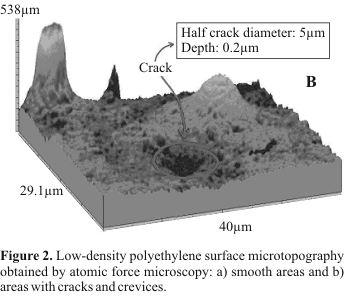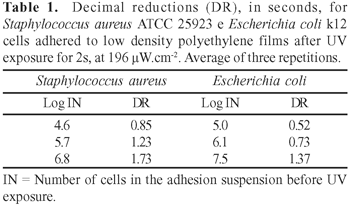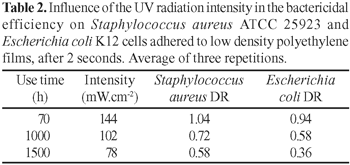Efficiency of ultraviolet (UV) radiation in reducing the cell number of Staphylococcus aureus ATCC 25923 and Escherichia coli K-12 adhered to low-density polyethylene (LDPE) films was evaluated. The microorganisms were let to adhere to the surface of LPDE bags for 12h at 18ºC, and then submitted to UV radiation at an intensity 196 µW.cm-2, 254nm, for 2 seconds. Staphylococcus aureus was less resistant to UV radiation than E. coli, and the efficiency increased with the increase of the concentration of microbial suspension. After 1500 hours of use the UV radiation intensity of the lamp was reduced from 288 to 78 µW.cm-2, and the higher decrease occurred in the first 100 hours of use. Also, the efficiency of the UV radiation decreased after 1500 hours of use. The number of mesophilic aerobes on the surface of LDPE films was reduced by 90% after irradiation with 137 µW.cm-2 for 2 seconds. Atomic force microscopy revealed cracks and crevices and protuberances on the LDPE surface, a topography that can protect the cells from UV radiation, reducing the efficiency of the process. The results showed that UV radiation can be a useful technique for reducing the microbiota adhered to LDPE films.
bacterial adhesion; ultraviolet radiation; low-density polyethylene; atomic force microscopy






